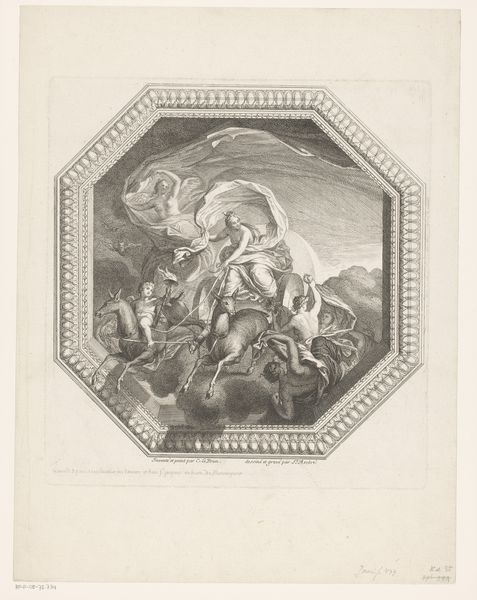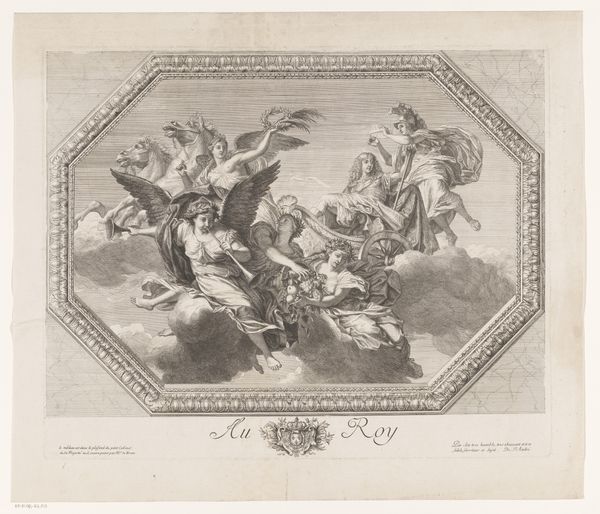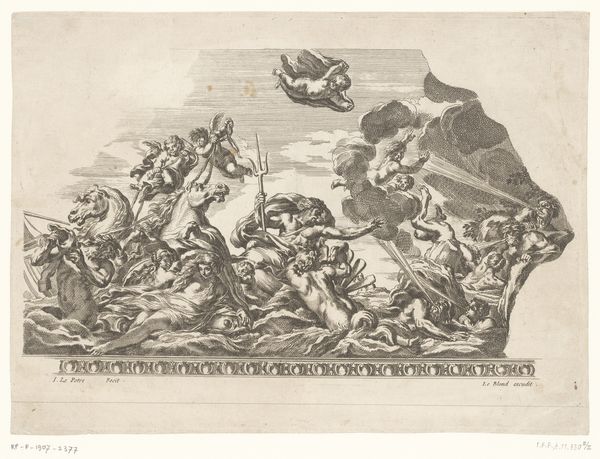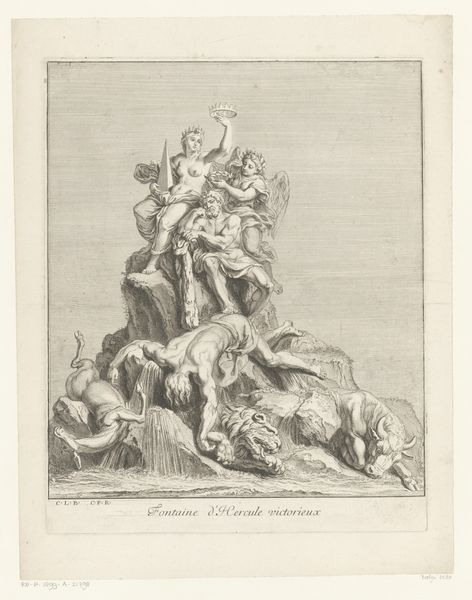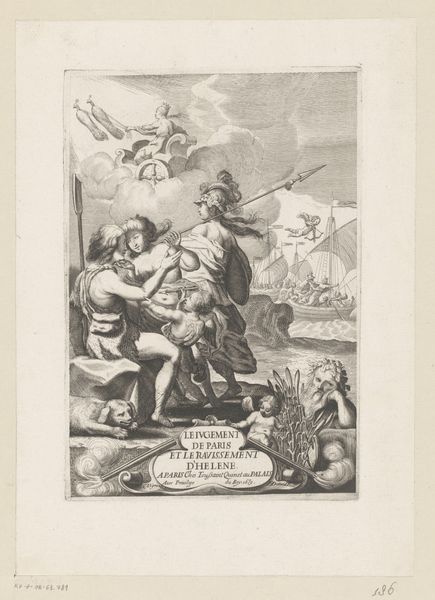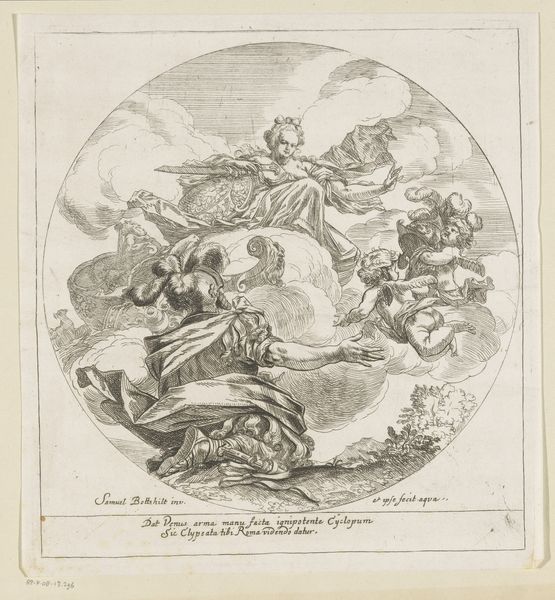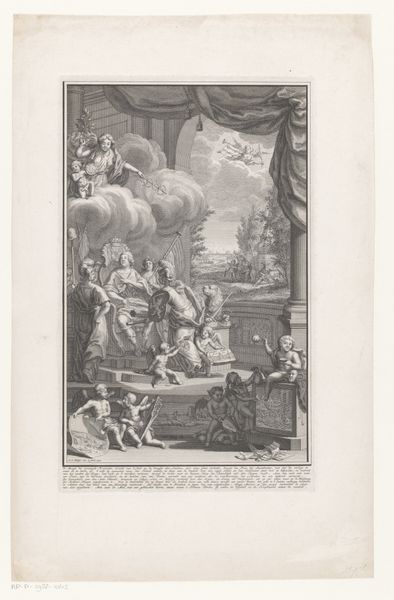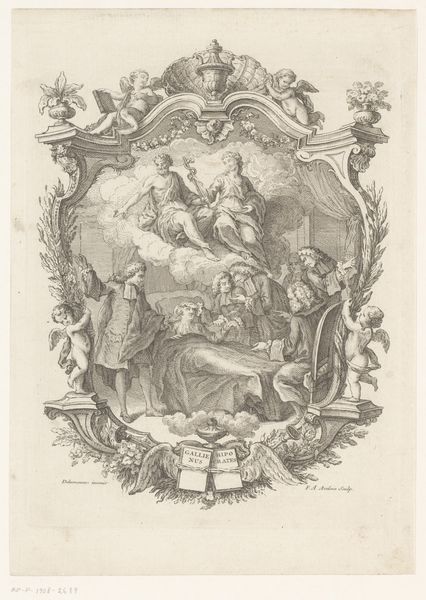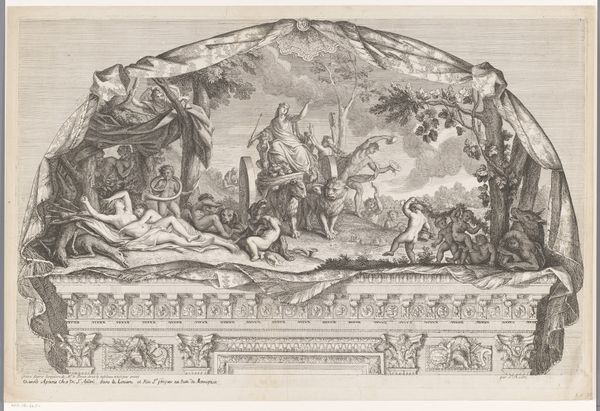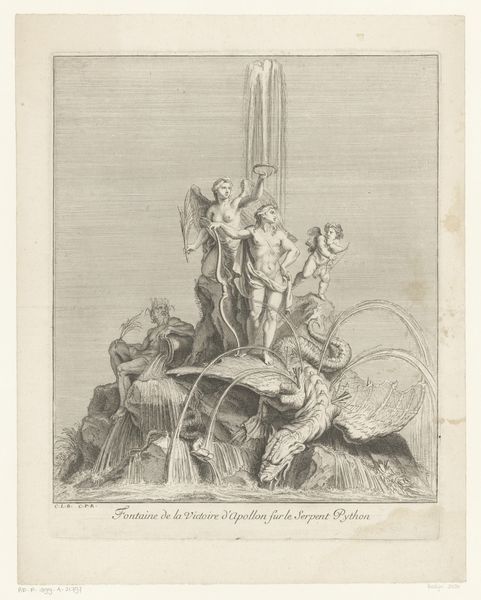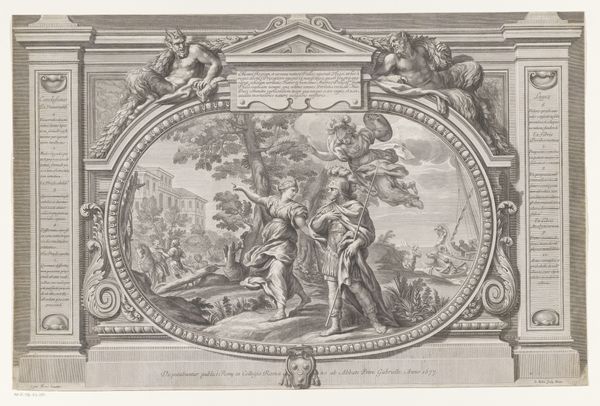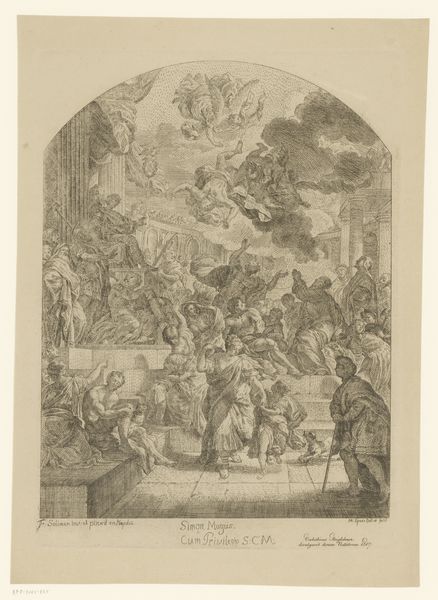
Venus op een strijdwagen getrokken door paarden 1669 - 1695
0:00
0:00
print, engraving
#
allegory
#
baroque
# print
#
old engraving style
#
history-painting
#
engraving
Dimensions: height 378 mm, width 355 mm
Copyright: Rijks Museum: Open Domain
Curator: This engraving, created between 1669 and 1695, depicts "Venus in a Chariot Pulled by Horses". It’s attributed to Augustin Jacques Renard de Saint-André. Editor: It's dynamic, isn't it? Despite the static nature of an engraving, there's such a powerful sense of movement, almost a celestial drama unfolding. The lines are so fine. What material was used for the matrix? Curator: The prevalence of Venus, or Aphrodite, connects this artwork to cultural memory. Think about the weight that the image of Venus has carried in western art as an emblem of female beauty. Even the chariot itself is symbolic of her dominion. The engraving uses line to create volume and movement, something which it also signals using symbolic elements: billowing cloaks, lively horses, flying cherubs and their banner above the goddess... Editor: Right, that chariot is far from the battle-ready vehicles of ancient lore. The swirling clouds underneath and supporting Venus' chariot tell me about both materials and labour: to me it is a kind of celebration of skill. Note how each form, from the musculature of the horses to the folds in Venus' garments, emerges from laborious marks. It reminds us that images are built through human intention and care, not magic. Curator: Absolutely. I find the placement of the figures so interesting, how she commands the whole composition from that lower register! The upward tilt almost compels us to participate in her ascent, not just as bystanders, but perhaps allegorically rising toward higher ideals. This artwork would've also echoed many prevailing theological frameworks and ideologies. The way the clouds swirl suggests a divine transport. Editor: Yes, but it's crucial to remember the socioeconomic conditions which would create demands for imagery like this. This was meant to decorate or promote wealth or status, to solidify narratives about the "natural order". And I imagine this would have been relatively easily circulated? Curator: Indeed, and this distribution allows this image to keep on affecting viewers throughout history. What lingers with me most, then, is how artists engage with cultural symbols like Venus over time, reaffirming and reinterpreting the symbols to which humanity keeps returning. Editor: And for me, it’s seeing how this intricate engraving, a product of skillful labor and specific materials, participates in broader systems of meaning. It urges us to constantly re-examine both visual culture and how labor crafts perception.
Comments
No comments
Be the first to comment and join the conversation on the ultimate creative platform.
